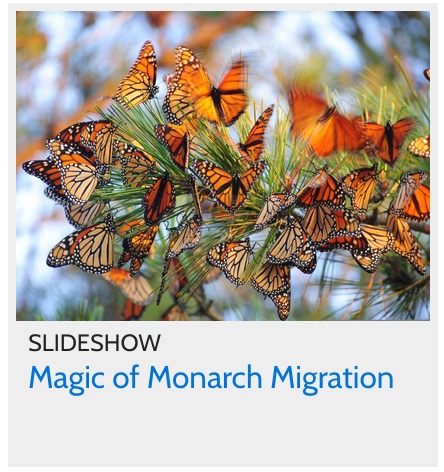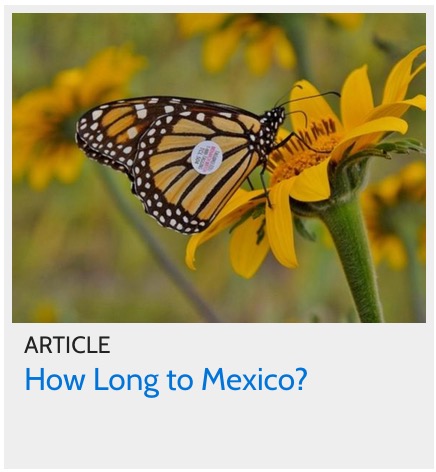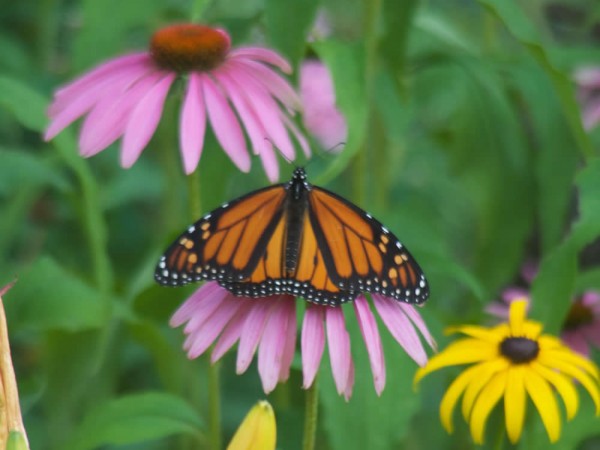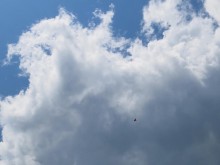Tracking Begins
Sightings of southbound butterflies, intense nectaring, and the first overnight roosts are being reported. Share your observations and help tell the dramatic story of the monarch's journey to Mexico.
Monarchs are changing dramatically in the fall, in physiology and in behavior. They are:
1. Becoming Migratory
Watch for signs of migratory monarchs:
- flying in directional flight
- clustering in overnight roosts
- nectaring intensely
2. Responding to Daylength
Declining day length is a central cue that triggers the monarch's migratory state. In the northern breeding range photoperiod is falling by 20 minutes by mid-August. This sends a signal that it's time to migrate.
Monarch Migration Updates are the core of Journey North's live program. Each Update includes a Journal Page They include real-time migration maps and challenge questions, authentic field observations from citizen scientists, they summarize news about the migrations and include related lessons and links. Invite students to collect and reflect on the news.
Every fall, a magical event takes place—the annual monarch migration to Mexico. Build a sense of wonder about monarchs and migration. Invite students to be citizen scientists, actively engaged in real-time scientific inquiry with Journey North as your guide.
Driving Question: What do you wonder about monarch migration?
Use with the slideshow: The Magic of Monarch Migration






